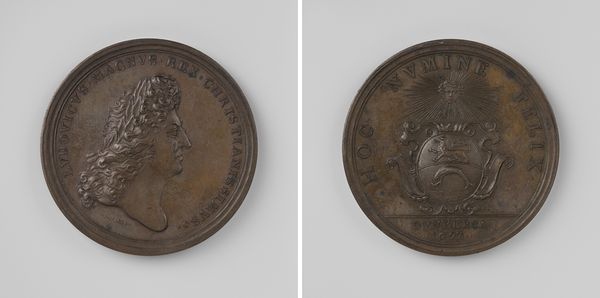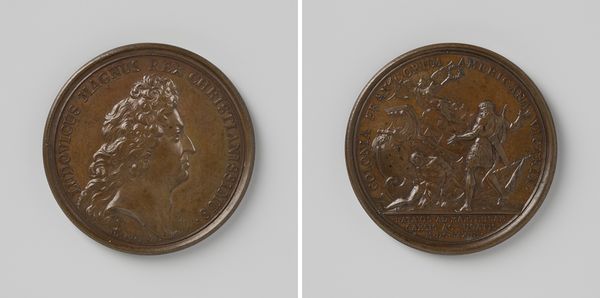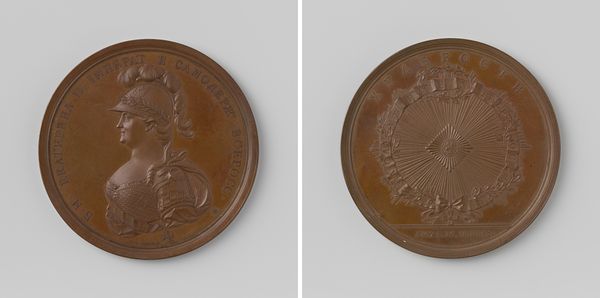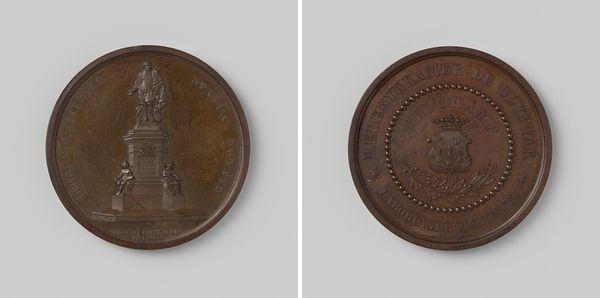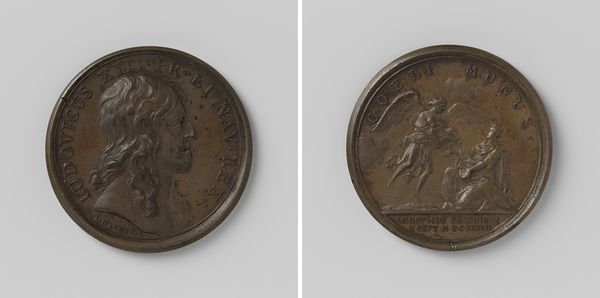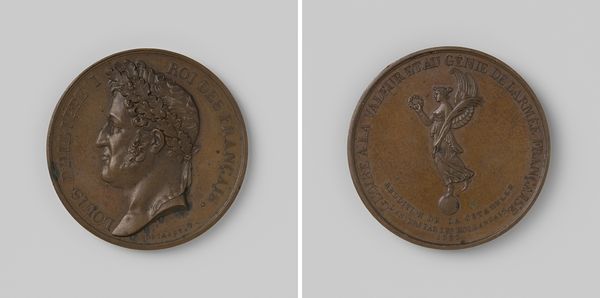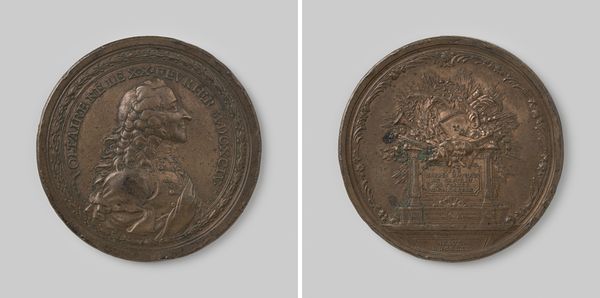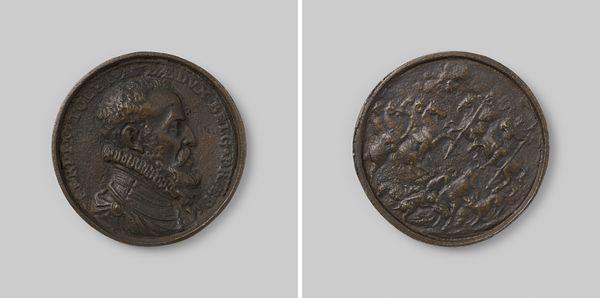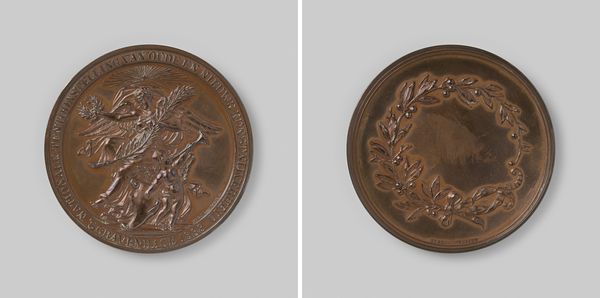
metal, relief, sculpture
#
portrait
#
baroque
#
metal
#
sculpture
#
relief
#
sculpture
Dimensions: diameter 4.1 cm, weight 34.55 gr
Copyright: Rijks Museum: Open Domain
Editor: This is a bronze relief by Jean Mauger, created between 1699 and 1703, titled "The Spanish Camp Plundered and Arras Liberated." It seems to be a commemorative medal, and its formality feels… removed from the actual lived experiences of conflict. What do you see in this piece? Curator: This medal, like many state-commissioned artworks, presents a highly specific, idealized narrative. Think about it as a form of propaganda, solidifying Louis XIV's image as a triumphant and divinely appointed ruler. The medal depicts not just a historical event—the liberation of Arras—but also an ideological victory. Editor: Propaganda, okay. So, the glorification of the King is meant to overshadow the reality of war? Curator: Exactly. It encourages us to consider who is absent from this representation: the ordinary soldiers, the civilians who suffered. Consider the Baroque style, known for its grandeur, its use here amplifies that glorification, masking the socio-political realities. Who benefits from these idealized narratives? Editor: The monarchy, definitely. It makes me think about monuments today, and who they represent, or often *don’t* represent. Curator: Precisely. This medal provides a lens to analyze power structures throughout history. How are such structures upheld? Whose voices are silenced or amplified in the process? Reflecting on this can enable us to question the narratives presented to us, even today. Editor: It’s powerful to think of a small object carrying so much weight and speaking to ongoing struggles about power and representation. Thanks for opening my eyes.
Comments
No comments
Be the first to comment and join the conversation on the ultimate creative platform.
